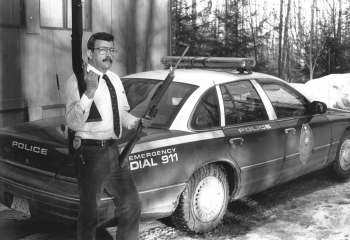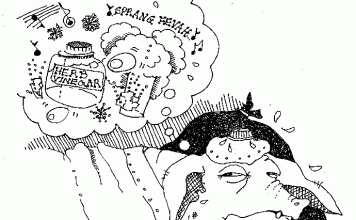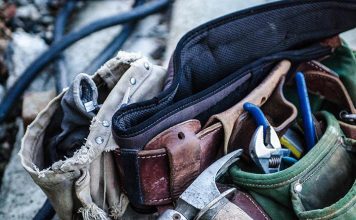 |
|
| Issue #70 • July/August, 2001 |
There are those who would ban private citizens’ ownership of semiautomatic rifles. After 27 years of carrying a badge, the author profoundly disagrees.
If there is any place you need state-of-the-art defensive firearms today, it is the Republic of South Africa. Yet it has been some time since private citizens there have been allowed to own a semiautomatic rifle in a caliber larger than .22 rimfire, unless they were in the military reserve and the weapon was government-issue. The ANC government, the unabashedly communist-based African National Congress, has recently passed sweeping laws that will restrict law-abiding citizens to ownership of only three or four firearms.
I first went to South Africa with my oldest daughter when she was ten years old. It was the time of apartheid, and under that rule, because of our Arabic blood, she and I were considered “colored.” No problem. She was allowed to be out and about with her .38 caliber revolver, so long as I was there to supervise, and I was authorized to carry my .44 Magnum concealed. They had no problem with my Springfield Armory M-21 semiautomatic sniper rifle, so long as I used it as a single-shot (no magazine) while actually hunting game. It was a time when any South AfricanBlack, White, or Colored under the three-stripe rainbow of apartheidcould legally carry a gun more easily than a citizen of any color in Washington, DC, or seven of the fifty United States even today. The crime rate in the cities was about like that of New York City at the time. No problem; if I and the kid both have guns we know how to use, we’ll take our chances. We did. We were safe.
Today, with a crime rate so high the ANC won’t publicize it, the danger is several times greater than the worst city in the United States. I will no longer bring one of my children there. Has restriction on firearms ownership reduced crime and danger? No, quite the reverse.
|
The same has been true in Great Britain and Australia. Both followed similar patterns. First, semiautomatic rifles were banned. Then other guns. Then handguns were banned completely (in England) or further restricted to a Draconian degree (Australia). In both countries there is at least still a free press, which reports that in both cases violent crime and armed crime have risen rather than fallen since the restrictions. It is clear that powerful government forces in the RSA, the UK, and Australia intend to finish what they’ve started with a complete disarmament of their law-abiding citizenry.
The United States has something those nations did not: a Constitution, and a Bill of Rights which contained that controversial Second Amendment. Though the anti-Constitution, anti-civil rights crowd would have the public believe that this merely empowers the National Guard, their argument has leaked like a sieve even among their own kind in the last decade. During that period, the Second Amendment has been heavily discussed in the law journals by the greatest scholars of judicial principle, and has been found in virtually every case to speak to an individual citizen’s right, not that of the states and the military reserve.
One doesn’t need to be a rocket scientist or a legal scholar to figure it out. Every other Amendment in the Bill of Rights (which goes part and parcel with the Constitution and the application of Constitutional Law) speaks to the rights of each and every individual citizen. Did the Framers accidentally slip up and transpose the Second Amendment here when they intended to put it in something about states’ rights? Not bloody likely.
In the application of law, there is also an important little thing called “obvious legislative intent.” It means that we have to analyze what was in the minds of those who made the law, and what their ultimate purpose was. In the time of the writing of the Bill of Rights, the gunfire of the American Revolution was still ringing in the ears of those who so carefully crafted the document. A “National Guard” of the period would, by definition, have been Tories loyal to King George. Somehow, Logic 101 tells us, it is not terribly likely that these were the forces the Framers intended to empower when they so deliberately and explicitly created the Bill of Rights and its Second Amendment.
The “militia” of which the Second Amendment speaks, today’s archaeologists of law almost unanimously agreed, was the enfranchised individual members of the society who were of a suitable age to fight in military battle. Yes, at the time it meant white males. Extrapolated to the egalitarian society today’s Americans know and love, it means every law-abiding adult of any color or gender who is competent to fight. Just as an honest interpretation of the Second Amendment passes the other tests and allows female as well as male, gay as well as straight, all colors and all religions, it passes the “agism” barrier. Otherwise, at the age of 45 or so, it could be said that the right to possess weapons ceases, since you’re too old for conscription into the militia.
When judges analyze a law’s applicability, they go to the caselaw, to cases that are on pointrelevantthat have already been decided by other jurisdictions. When you discuss the militia today on the planet earth, some of the strongest caselaw is embodied by the experience of Switzerland. The Swiss have been at peace longer than any other people on Earth, primarily because virtually every adult male (and any adult female who wants to join the effort) is a member of the militia and issued a real assault rifle.
The rifle the Swiss government issues to its citizens is a true machine gun. Picture a match-accurate M-16 rifle with a target grade trigger and a selector switch that goes from safe to semiautomatic to three-shot burst to full automatic, and you have the Sturmgewehr-90, which may be the most advanced assault rifle on earth. There’s one in almost every Swiss home, yet mass murders in public are unknown in that country. The murder rate in Switzerland is a fraction of that in the lowest-crime states in the US, despite the ubiquitous presence of machine guns and ammunition.
When their time comes to leave the militia, aging members have the option of keeping their rifles. A great many do. The Swiss army, with only a few thousand full time career members, see the retired militia people who are still armed as one more resource that keeps their country safe from war.
Barely more than half a century ago, the Nazi war machine considered invading Switzerland. It was the sort of nightmare that would make a field marshal of an army of conquest wake up screaming in the middle of the night. Every home a sniper’s nest? Mountain roads and bridges all mined, ready to be blown up and made impassable within 24 hours of an invasion? A populace unworried about embargo because every home had a year’s supply of food, not to mention a significant supply of ammunition? And why had the German spies reported that every Swiss village had a 300-meter rifle range, busily used by the citizenry every weekend?
|
It was Invader Motel. “They check in, but they don’t check out.” Why did field marshals who could not dissuade Adolf Hitler from invading Russia in winter manage to convince him that there was no future in attacking tiny Switzerland? Because some things are so obvious that even raving madmen can understand them.
At the time, the Japanese Empire certainly understood it as it drafted plans to invade the mainland United States. In 1960, Robert Menard was a Commander aboard the USS Constellation when he was part of a meeting between United States Navy personnel and their counterparts in the Japanese Defense Forces. Fifteen years had passed since VJ day, most of those at the meeting were WWII veterans, and men who had fought each other to the death at sea were now comrades in battle who could confide in one another.
Someone at the table asked a Japanese admiral why, with the Pacific Fleet devastated at Pearl Harbor and the mainland US forces in what Japan had to know was a pathetic state of unreadiness, Japan had not simply invaded the West Coast.
Menard would never forget the crafty look on the Japanese commander’s face as he frankly answered the question. You are right, he told the Americans. We did indeed know much about your preparedness. We knew that probably every second home in your country contained firearms. We knew that your country actually had state championships for private citizens shooting military rifles. We were not fools to set foot in such quicksand.
Tradition
The 20th Century saw a tradition develop in which American citizens not only shot NRA Rifle Matches with the guns of their nation’s military, but used them for hunting. The bolt action rifle replaced the lever action after one generation came back from the Spanish-American War acclimated to the Krag, and another returned from the Great War that they’d fought with the Springfield. When WWII ended, a generation of Americans had learned that they could trust their life to the semiautomatic Garand, and the popularity of semiautomatic hunting and target rifles soared. Not until the Vietnam conflict did a generation of Americans feel a need to own an AR-15.
Now, for the first time, the US Military had issued a true assault riflea “selective fire” weapon that could become a “machine gun” with a flick of a leverto its rank and file troops. More than half a century before, the National Firearms Act had limited the ownership of fully automatic weapons, machine guns, so strictly that the general public thought their private ownership was banned. Actually, all that was required to own one was an investigation by the Government to prove that the applicant was, no pun intended, the highest caliber of trustworthy American citizen, and a hefty licensing fee. Some states, however, had banned their ownership at a state law level.
This did not trouble the general citizenry. The AR-15 sold to the public simply fired one shot at a time, like their issue M-16 set on semiautomatic, and it sufficed to remind them of the time when they fought for their country. To remind them they had fought for a country that trusted them and their fellow citizens.
Today’s perspective
Fast-forward to the present. We live in a time when those who believe they were born to rule others and should be able to command them without input from those they rule, put forth emotional and flowery arguments as to why they should disarm the American people. They always seem to cite support from “the local police.”
They never mention that many if not most of the uniformed police officers who stood behind Bill Clinton when, as President, he signed the Brady Bill and the Crime Bill into law, were ordered to be there for the “photo op.” They do not mention that the high-profile police chiefs who publicly support gun bans are appointed officials who must hew to the lines the appointing politicians feed them to speak, or be demoted to the rank of captain, the highest rank protected by Civil Service regulations.
|
Nor do they mention that virtually every poll of rank and file police indicates overwhelmingly that the street cops on the ground oppose further “gun control” measures aimed at law-abiding private citizens. And they never mention that, for the last several years, police have been trading in their “riot shotguns” en masse for semiautomatic rifles like the AR-15.
America’s police do not fear guns. They are an armed society themselves. What they fear are criminals with guns. They have learned through hard reality that it is criminals, not guns, that need to be controlled.
Those who have stood in the front lines against armed criminals know that the operative term is criminal, not armed. An Illinois cop who has arrested criminals for 25 years resents the fact that the moment he turns in his badge or star, he will be forbidden to carry a gun with which to protect himself and his family from those he has been sending to prison for a quarter of a century, who might think “Cape Fear” was a training film. A New Jersey cop resents the fact that when he retires, he will no longer be trusted with an AR-15 rifle like the one in his patrol car that protected him and his citizens from the deadliest danger.
In 2003, the “Crime Law” that banned ownership of certain semiautomatic firearms and of magazines that held more than 10 cartridges will “sunset.” There is time now to make it clear to elected representatives that such regulations should die a natural death, indeed, should be interred forever with a stake in their heart and a clove of garlic in their mouth so they don’t rise up again to interfere with decent citizens of a free country.
The time to decide is coming. The choice is the English and Australian model, or the Swiss model. The choice is simple, the choice is stark, and the choice will be made by those who understand the issues and care to become involved.
Massad Ayoob has spent slightly more than half his life, 27 years, as a sworn police officer. He has served for the last 11 years as a captain, the highest rank he expects to attain, in a municipal police department. He was a law-abiding armed citizen before he pinned on a badge and swore an oath to die if necessary in defense of those he was entrusted to protect (and in defense of the United States Constitution), and expects to remain one when he turns in his shield. Next issue, this essay continues with more “close-to-home” arguments for why private citizens should be allowed to own the type of arms in question.

















